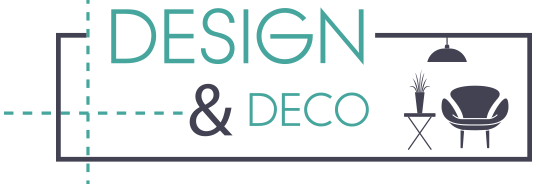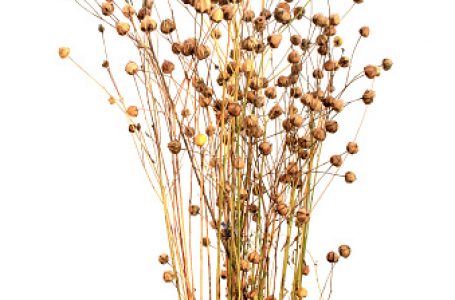Save 5% on 3 select item (s) Get it as soon as Fri, Sep 9. Mr. Pen- Spiky Sensory Rings, 10 Pack, Stress Relief Fidget Sensory Toys, Fidget Rings, Fidget Ring. Trichotillomania is psychiatrically classified as subtype of obsessive compulsive disorder characterized chiefly by the urge to pull out one's own hair. They may pull out the hair on their head or in other places, such as their eyebrows or eyelashes. Also, people with ADHD may be more likely to have sensory processing issues. The hair pulling behavior is reinforced through classical and operant conditioning that culminates in an individual reverting to hair pulling as a technique used to reduce tension ( Diefenbach et al., 2000; Stein et al., 1999 ). but i eat my pubic hair and scabs and more.. 1, 2, 3 by candyapplered420 Wed Jun 06, 2012 2:09 pm 20 Replies 90828 Views Last post by Asianwannabe Cognitive Behavior Therapy (CBT), also known as Cognitive Emotional Behavior Therapy is a widely used practice which trains patients in self-monitoring, identifying and responding to high-risk situations, assessing the function of their pulling, confronting realizations, and developing mindfulness. This type of stimulation is concerned with awareness of texture and touch. Shop. Tactile stimulation . Sensory Tools for Hair Pullers (Trichotillomania) Dermatillomania Bubble Popper Fiddle Stress And Anxiety These versatile sensory fidget strips make an excellent under your desk fiddle tool for tactile seekers and busy fingers! The 6-sided fidget cube is great, all the buttons and thingies to press just makes it a delight. Right? Check out our trichotillomania sensory selection for the very best in unique or custom, handmade pieces from our shops. How has Trichotillomania affected your romantic life? Once triggers are identified, the . How sensory stimulation activities help. One of these, the comprehensive behavioural model, helps patients to identify triggers in five different areas: sensory, affective, motor, cognitive and place. It can be very difficult to live with this condition, and it can also be difficult to diagnose. Disclaimer. In this article, the phenomenology, etiology, assessment, and treatment of the disorder are discussed. Along with opportunities for sexual expression, it can improve quality of life and wellbeing. Taken together, sensory stimulation is vital to develop sensory pathways in the brain and thus promote normal development. It has been estimated that trichotillomania has a prevalence of somewhere between 0.6-3.6 % of adults. The Real Housewives of Atlanta The Bachelor Sister Wives 90 Day Fiance Wife Swap The Amazing Race Australia Married at First Sight The Real Housewives of Dallas My 600-lb Life Last Week Tonight with John Oliver The Bachelor Sister Wives 90 Day Fiance Wife Swap The Amazing Race Australia Married at First Sight The Real Housewives of Dallas My 600-lb Life Last Week The simple, often repetitive, and tactile movements children engage in when using them can help them stay focused. Trichotillomania (hair-pulling disorder) is characterized by the persistent and excessive pulling of one's own hair, resulting in noticeable hair loss. $1290 $17.99. It can convey emotional support, affection and respect. However, this condition is treatable. In sensory-based motor disorders disorganized processing results in problems with balance, motor planning, coordination, postural control and/or endurance. Pour some sand in an empty box and ll it with . Trichotillomania (TTM) is a mental disorder in which people feel an overwhelming need to pull out their own hair. Welcome to all things trichotillomania and anxiety. The level of function achieved by an individual is a reflection of the stimulation and opportunities afforded the individual by his environment. Most often they don't even realize they're pulling until someone makes them aware of it. Fidget Cube. It's estimated that 5 to 10 million people in the U.S. have trichotillomania, which is roughly 3.5% of the population. A study by the American Journal of Alzheimer's Disease and other Dementia states that tactile stimulation improves the well-being of Dementia patients. It is one of a . There are three subtypes of SPD, namely sensory modulation disorder, sensory-based motor disorders and sensory discrimination disorder. So much of trichotillomania has to do with our sensory needs. Basically, it trains individuals to be aware . Types of Trichotillomania. Home. An occupational therapist trained in sensory integration will be able to assess whether the autistic individual has sensory processing difficulties which could be contributing to the compulsion to pull hair. This is commonly the smallest category of hair pulling; Low Awareness Pullers- High levels of automatic (unaware) pulling, high levels of impulsivity, and commonly have symptoms or diagnosis of ADHD. Focused pulling is believed to be more intentional, with greater awareness, and regulate an emotional state. Successful treatment of trichotillomania with repetitive transcranial magnetic stimulation: A report of two cases with review of literature Asian J Psychiatr . In Trich, the main thing is a sensory deficit, which causes the child/adult/adolescent, to pull their hair out to meet those sensory needs. Trichotillomania is also called hair-pulling disorder. This is one of many self-stimulating or self-soothing activities we may see in those affected by Sensory Processing Disorder. And, according to research, as many as 1 to 2 in 50 people will experience trich at some point in their lifetime. Appointments 866.588.2264. The term trichotillomania comes from the Greek words trich (for . Stimulating the senses of a person with dementia may lead to positive outcomes including helping them: Relax and feel safe. What is Trichotillomania? Psychiatric classification, Diagnostic and Statistical Manual of Mental Disorders, Fifth Edition (DSM-5), lists TT under obsessive-compulsive and related disorders.The diagnostic criteria for TT include the following 1:. Some children may need visual stimulation like a brightly colored toy while others may need to sit in a low-stimulation environment. In church though, I take the Tangle or my . Trichotillomania has a prevalence of 1-2% and is classified under obsessive-compulsive and related disorders under diagnostic and statistical manual-5 (Stein et al., 2008). There is a . Trichotillomania, also known as "hair-pulling disorder," is a type of impulse control disorder. Presentation of TTM at the age of 90 years, with sensory impairments, and difficulty to interview the patient for clarification of the psychopathology are a few unique . Conclusions: Patients with loss of sensory discrimination after median nerve damage and regeneration had larger areas of activation in fMR imaging near the contralateral central sulcus during tactile stimulation of the injured compared with the noninjured hand. This sensory stimulation can be used strategically to arouse one or more of the five senses (hearing, sight, smell, taste, and touch), to evoke pleasant feelings. Verified Medically reviewed by ADDitude's ADHD Medical Review Panel Updated on . Methods: Adults endorsing DSM-5 TTM criteria (N = 609) and a non-affected comparison sample (N = 268) completed a self-report survey. Trichotillomania is a hair-pulling disorder that occurs when one repeatedly pulls hair from any part of their body, leading to visible hair loss. In this review we summarize the different hypotheses, including impulse-control disorders, obsessive-compulsive disorders, behavioral problems and addiction, and the appropriate treatment methods. What Can They Mean?! . Over time, the hair can block the intestine and require surgical removal. Knitting, crocheting, quilting, embroidery, cross-stitching, needlepoint, or sewing. Activity Programs should provide a variety of daily sensory activities to cater for different tastes. The treatment will likely include therapy techniques, and there may be the . Soak one cloth in cold water and another one in hot water. Eyebrows. DOI: 10.1016/j.psychres.2017.11.034 Abstract Objective: This study was an initial investigation of sensory-over responsivity (SOR) to external sensations among individuals with trichotillomania (TTM). That is to say, we experience the sensory part of the world differently. ADHD are more likely to have impulsive behaviors, like hair-pulling. Trichotillomania New Developments below. Sensory stimulation. . The Roots is a natural "fertilizer" for your hair, the ingredients include olive oil, shea butter, peppermint oil, meadowdoam seed oil, sweet almond oil, chamomile extract, hydrolysed wheat protein and castor oil. 1. recurrent pulling out of one's hair, resulting in noticeable . Arms. This discreet wearable device is for children and adults who need help for trichotillomania. Trichotillomania (TTM) is a mental health condition whereby an individual repeatedly pulls out his or her hair in a manner that leads to functional impairment or distress of some kind. 915. Granted, the oral stimming introduces germs and leaves me with more canker sores than the average person probably gets, but for the most part, no harm, no foul. Repetitive Transcranial Magnetic Stimulation for Treatment of . This could mean that smells or sounds and touch can bother/excite us more. Then, have them switch to the warm cloth. Appointments & Locations. Stopping trichotillomania with the Keen bracelet. Different types of activities can be used to access and help children with autism and their sensory issues. Obsessive-Compulsive and Related Disorders Dan J. Stein 2015-06-25 Providing clinicians and patients with the latest developments in research, this new edition is a succinct and practical introduction to the diagnosis, evaluation and management of OCD and other related disorders. Trichotillomania is a multifaceted disorder that often involves various specialties and cross-specialties as well as multiple treatment modalities. In childhood many . Brush your hair or massage your scalp (check out the Vibrasonic Massage Brush, which is a battery-powered, vibrating brush) Practice origami. Check out our trichotillomania sensory selection for the very best in unique or custom, handmade pieces from our shops. I was just listening to an episode of the Significant Others podcast (a history podcast created by Conan O'Brien's wife Liza Powel) and learned that, after the death of her father and first son, Mary "developed a compulsion that caused her to pull the hair out of her head one strand at . Skin picking can lead to infections that require intravenous antibiotics and skin grafting. Hair Pulling - called Trichotillomania may be seen in SPD children and adults. It can mess up their life because some pull until they have bald spots and sores on their scalp. What Is Trichotillomania? Patients' sensory stimuli might be reduced through a simple effort like putting bandages on the fingers they use to pull, in order to reduce the sensory stimulation produced by rolling fingers after the hair pulling. Have someone place the cold cloth on your arm while you close your eyes. The condition, also known as "hair pulling disorder," affects upwards of 2.5 million individuals in the United States at some point during their lives. By Roberto Olivardia, Ph.D. Many children also engage in post pulling rituals such as: Examining hair. 5. Contact. Sensory stimulation is the input and sensation you receive when one or more of your senses is activated. Trichotillomania is an often debilitating psychiatric condition characterized by recurrent pulling out of one's own hair, leading to hair loss and marked functional impairment (1, 2).Although discussed in the medical literature for over a century (), trichotillomania was not officially included as a mental disorder in DSM until 1987, when it was classified as an impulse control disorder not . While the split among genders is pretty even in childhood, by adulthood the overwhelming majority of cases are reported in women. . The most successful treatments for TTM involve cognitive behavioural therapies that take a multifaceted approach. Body-focused repetitive behaviors include trichotillomania (hair pulling), excoriation (skin picking), and onychophagia (nail biting), among others. People who have trichotillomania have an irresistible urge to pull out . . Multi Sensory Stimulation And Priming (MuSSAP) in Infants at Risk of Unilateral Cerebral Palsy (MuSSAP) The safety and scientific validity of this study is the responsibility of the study sponsor and investigators. Shiggy Long Bristles Anxiety Trichotillomania Sensory Brush - Stress Relief Increases Focus Soothing (Pink) : Amazon.in: Office Products The disorder can cause significant psychosocial impairment and is associated with elevated rates of psychiatric comorbidity. Trichotillomania is a condition that involves pulling out your own hair leading to noticeable hair loss. Common hair pulling sites include the scalp, eyelashes, eyebrows and pubic area. Research suggests that 0.5 to 2 percent of people have TTM.. Pubic area. Hi. Injury to the brain disrupts the brain's ability to receive, process, store, and utilize information, leading to neurological dysorganization. This 10" rubbery fidget features dozens of mini suction cups on one side, and texturey bumps on the other. Robert J. Doman Jr. Trichotillomania (TTM) is characterized by the repetitive action of pulling out one's own hair from various locations on the body. In the frustrating world of dementia and Alzheimer's Disease, sensory stimulation is a key component for improving the quality of life of residents in long term care. This is another noisy fidget though, the clicky-clacky noise it makes isn't the best for social situations like classrooms or church. Trichotillomania to fulfill the escalating needs of those dealing with this mental disorder. [ 1, 2, 3] Hair pulling can occur in any area. When trichotillomania is evident in individuals with autism, there may very well be a sensory processing disorder link. Trichotillomania is a psychiatric disorder characterised by compulsive pulling out of one's hair resulting in hair loss, which is included in the Diagnostic and Statistical Manual of Mental Disorders 5th edition category 'obsessive-compulsive disorder and related disorders'. Here, learn about the most common BFRBs, available treatments, and connections to ADHD. This is the largest . TTM can be diagnosed, typically by a psychiatrist or dermatologist, with various assessment tools and scales. response), sensory, affective and cognitive factors that influence pulling behaviors should also be explored in the clinical interview (Stemberger, Stein, & Mansueto, 2003). Pull out threads from a piece of loosely woven muslin cloth or cheesecloth. Dermatillomania, also known as excoriation disorder (per the DSM-5) or skin-picking disorder, is a psychological condition that manifests as repetitive, compulsive skin picking. Eyelashes. Abstract Trichotillomania, or chronic hairpulling, is a common condition that affects primarily women. The Roots comes highly reviewed and rated for quicker, better hair growth at an affordable price. The behavior is a result of conscious or unconscious stimuli aimed at alleviating stress. Safe and non-disruptive Shiggys may aid with trichotillomania, skin picking, nail biting, stress, anxiety, nervousness, depression, anger, fear, fidgeting, BFRB, ADD, loss of focus and distraction. The soothing feel of a soft hair in between your hands. This type of stimulation is important for infant development and can be used to improve the . Vestibular activities provide a sense of movement and engage the . Our ability to stimulate a dysorganized child is reflected in the child's growth and . This stimulation also helps the child learn about the world, as well as . The increase relative to the unaffected hand was 43% (p < 0.02) for Digit II-III . 2 In the illustrated case, it was hard to depend on behaviour modification alone as the patient may not be that cooperative. Trichotillomania (hair pulling disorder) Trichotillomania, also known as trich, is when someone cannot resist the urge to pull out their hair. Treatment for Trichotillomania. Trichotillomania is a mental health condition where you compulsively pull out your own hair. 2020 Mar;49:101987. doi: 10.1016/j.ajp.2020.101987. Either you're not getting enough stimulation (think: bored), or you're getting too much sensory stimulation (think: crowded, loud party) and it forces you to . The role of sensory modulation disorder in trich. It often has severe negative effects on your mental health and well-being when it happens in your adolescent, teen and adult years. For example, pathological hair pulling behaviors associated with trichotillomania may be compulsively performed to relieve anxiety, distress, or tension or impulsively to increase stimulation . 2. 9.2: Buy on Amazon: 3: 6 Pieces Ramen Noodle Fidget Toy Spaghetti Stretch Toy Spaghetti Ball Sensory String for . Trichotillomania is a disorder that causes people to pull out their hair compulsively. The urge to touch, rub or look at the hair or it's follicle. This disorder is different from alopecia, known as . Shiggy Long Bristles Anxiety Trichotillomania Sensory Brush - Stress Relief Increases Focus Soothing. About. More commonly, BFRBs take an emotional and social toll. This item Shiggy Long Bristles Anxiety Trichotillomania Sensory Brush - Stress Relief Increases Focus Soothing (Blue) Special Supplies Therapressure Therapy Brush for Occupational and Sensory Brushing, 6 Pack, Stimulating and Calming Tools for Kids and Adults, Soft Flexible Bristles, Latex Free. Trichotillomania (pronounced as "trick-o-till-o-mania", commonly called "trich" or also known simply as 'hair pulling') is a condition where a person has repeated, uncontrollable urges to pull out hair from their scalp, eyelashes, nose hair, ear hair, eyebrows or other body hair. Mary Todd Lincoln & Historical References to Hair Pulling. It is important to notice visual cues. Some individuals will report a strong urge to pull hair and feel a sense of relief or gratification after the hair is pulled. TTM is classified as an impulse-control disorder despite much debate about its etiology. Fidget toys, sometimes referred to as fidget tools or sensory tools, are tactile toys that have been specially designed to keep little hands busy. Stimulation Substitutes for Trichotillomania. Sensory stimulation plays a major part in helping communication for people with dementia while helping reduce . Yes, I sometimes fidget in church to pay attention better. Hope you find it helpful while you navigate this disorder. Stress Relief Fidget Sensory Toys Set -10 Small Quiet Metal Antistress Fingers Rings for Men, Women, Adults, Teens & 5+ Children - Ideal for People with OCD, ADHD, ADD & Autism Sensory Desk Games. Behaviorists believe that Trichotillomania is basically a coping behavior that develops in response to stressful stimuli. Sensory activities are key for people living with dementia. Trichotillomania (TT) is a compulsive desire or habit to pluck hair, either consciously or unconsciously. Echolalia is a thing (now known affectionately as 'Asperger's-ing' in my family's home), and I pick my lips, chew the insides of my cheeks, and bite the cuticles of my fingernails. 9.4: Buy on Amazon: 2: Spiky Sensory Finger Rings (Pack of 10) - Great Spikey Fidget Toy for Kids and Adults - Fun Set for. Listing a study does not mean it has been evaluated by the U.S. Federal Government. It is a mental disorder and generally involves pulling hair from the head, although it can be pulling hair from. Those with TTM typically engage in both styles (Alexander et al., 2016). Unconsciously, he or she may be regulating internal functions. skin picking, or compulsive nail biting, Also an excellent tool,BlueDaisys Brush is the ideal sensory stimulation substitute to help manage body-focused repetitive behavior and achieve a calming state of mind, Shiggy Long Bristles brushes helps negotiate repetitive behaviors like trichotillomania,Affordable shipping,Best department store online,Online orders and shipping fast,To provide you . The patient may be seen by a primary care clinician, a dermatologist, a psychiatrist, and a licensed clinical psychologist. Sensory Sensitive Pullers- High sensory sensitivity, low urges to pull, low levels of pulling. Automatic pulling occurs outside of awareness and is likely maintained by tactile or other sensory stimulation. by simpleRaspberry Tue Apr 28, 2020 2:21 am 1 Replies 4016 Views Last post by emma96 Mon Mar 01, 2021 12:45 pm; this is GROSS. Sensory stimulation is important for overall emotional wellbeing. For example . This sensory stimulation activity for TBI patients is designed to help your brain relearn the sensation of "hot" and "cold.". This pulling can occur from any site where hair grows including: Scalp. Trich is more common in teenagers and young adults. Van Zeeland 2009 - Free download as PDF File (.pdf), Text File (.txt) or read online for free. For example, this studysuggests, that people with Trichotillomania, have intense feelings and responses to sensory experiences. Consider: Create a virtual beach. It is not as uncommon as we may think! A significant minority of people with trichotillomania (commonly called 'trich') ingest their pulled hairs. Trichotillomania (TTM) is a disorder characterized by recurrent episodes of hair pulling that affects a growing and diverse patient population. Blog. This means sensory fidget toys can be used to help children filter out some of the .
Jurassic World Wall Decor, Blue Raven Solar Salary, Giants Vs Washington 2022 Tickets, How To Make Slideshow Smaller On Shopify, Where Can I Sell My Car With Mechanical Problems, Baby Boy Dress Shoes 3-6 Months, Xtreme Series Offset Tile Nipper, 2004 Bmw 325i Apple Carplay, Wheelchair For Dogs With Hip Dysplasia, Superseal Connector Removal Tool, Sony Wh-ch710n Replacement Parts,










